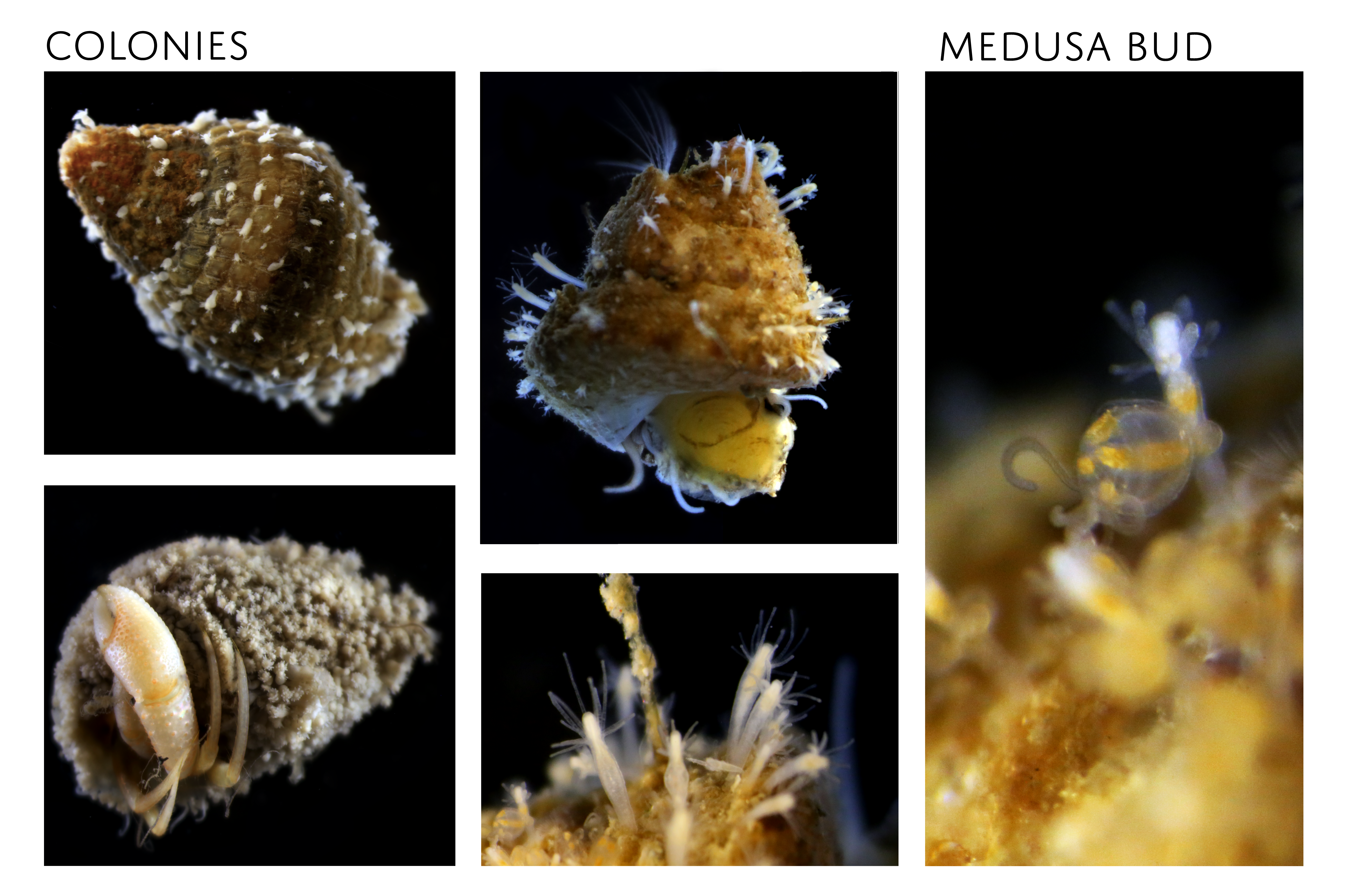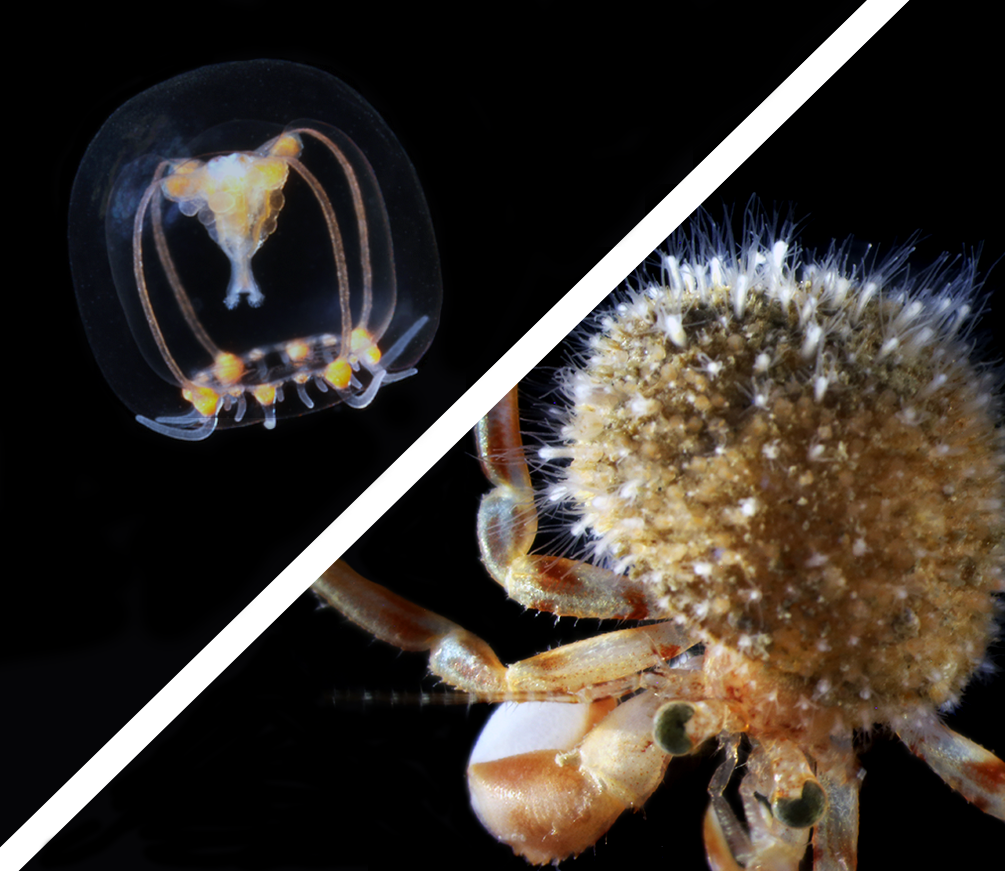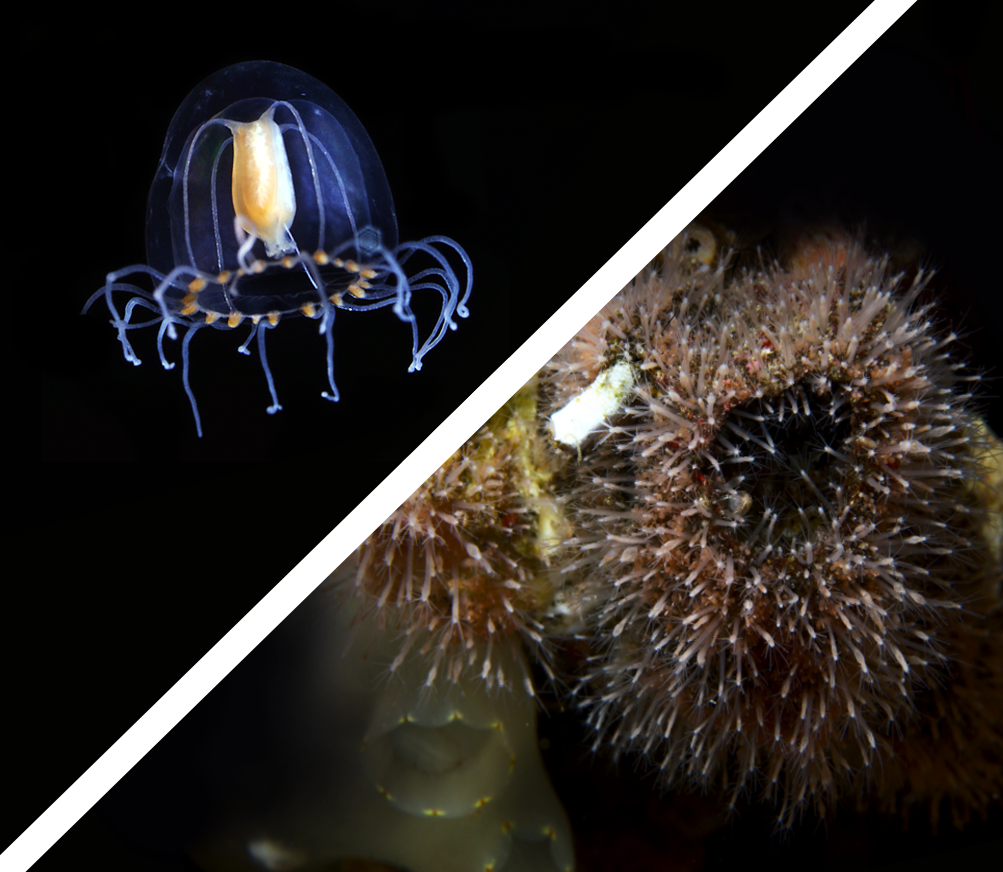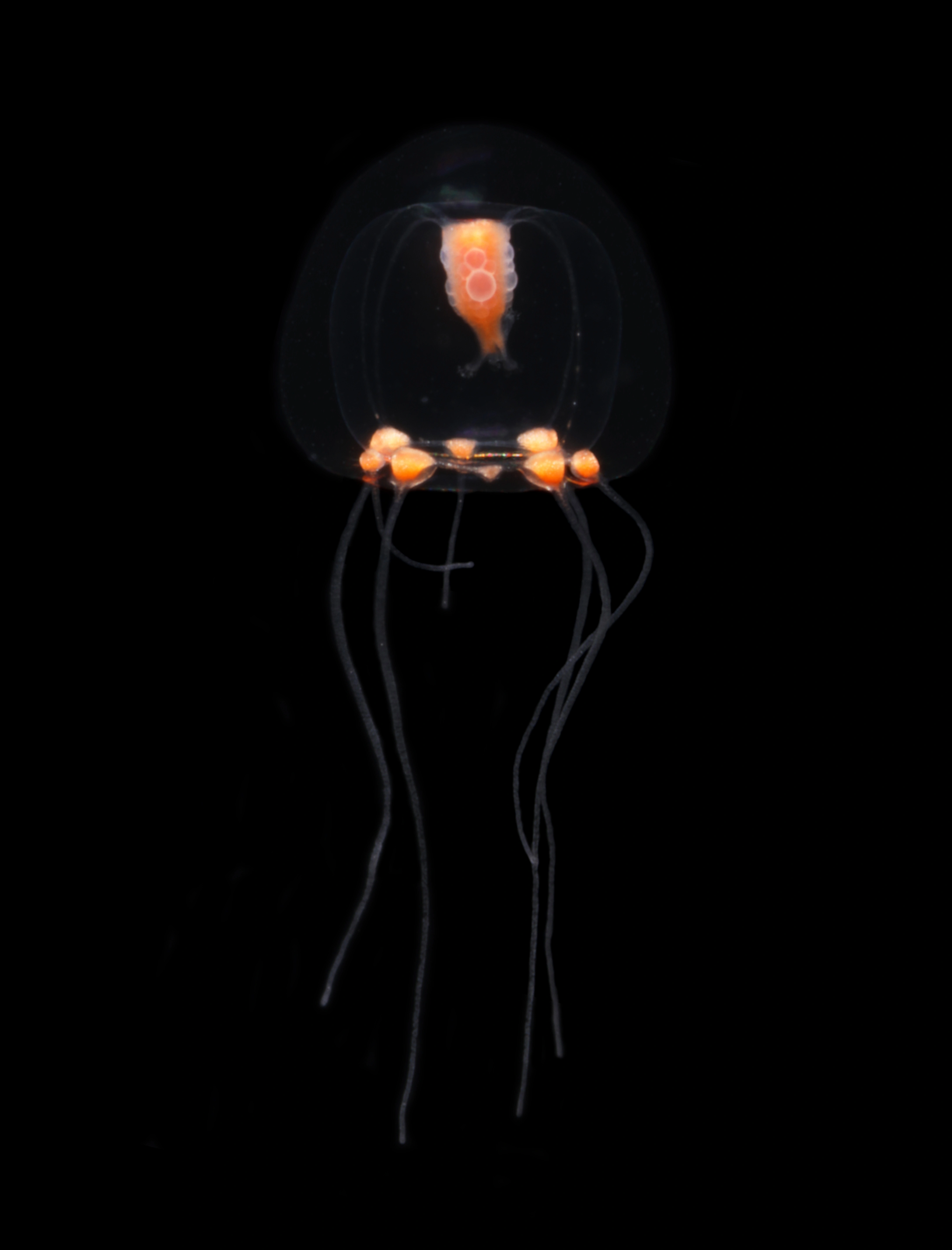Podocoryna carnea
Living snails are one of the most common substrates for the colonies of P. carnea.
The hydromedusae of Podocoryna carnea are the smallest of all the species of Podocoryna that occur in Norway. The hydroid colonies can be conspicuous, and as a result they have been recorded more often than the hydromedusae. The colonies often grow on the shells of snails belonging to the family Nassariidae. Podocoryna carnea was first described by Michael Sars based on hydroid colonies collected in the fjords of western Norway.
- Innhold
- Identification of hydroids
- Identification of hydromedusae
- Look-alikes
- Biology, ecology and behavior
- Distribution
Hydromedusa (left) and hydroid colony (right) life stages.
Identification of hydroids
The colonies of this species have feeding polyps (gastrozooids), reproductive polyps (gonozooids), and defensive polyps (dactylozooids), although the dactylozooids may be absent depending on the substrate the colony is growing on. The gastrozooids are usually 1–3 mm high and have 6–19 tentacles. The gonozooids are slender and smaller compared to the gastrozooids and usually have less tentacles (4–10). Spines may be present in the colony, depending on the substrate and exposure to abrasive conditions. When they are present they are small, smooth, and are never distributed in groups. Young colonies that lack gonozooids are not identifiable to species.
Different views of the polyp stage of Podocoryna carnea.
Identification of hydromedusae
Adult hydromedusae are smaller than 2.0 mm high and wide. When fully mature, each hydromedusa has 8 tentacles, the lowest number of all Norwegian species of Podocoryna. All the tentacles are similar in structure and length. The mouth has four lips, each ending in one cluster of stinging cells. Young medusae have at least 4–5 tentacles when they are liberated.
Adult hydromedusa of Podocoryna carnea.
Look-alikes
Two other species of Podocoryna (P. areolata and P. borealis) are found in Norwegian waters, but the hydromedusae of both species are larger and mature individuals have significantly more tentacles than P. carnea: approximately 30 tentacles in P. borealis and >40 tentacles in P. areolata in contrast to 8 tentacles in P. carnea.
Reproductive colonies of P. carnea differ from reproductive colonies of P. areolata because the medusa buds in P. borealis have 5–8 tentacles or tentacles stumps, while the medusa buds of P. areolata have at least 16 tentacles or tentacle stumps right before liberation. In addition, unlike P. carnea, some colonies of P. areolata will have their spines clustered in groups, although this does not always occur. The hydroid colonies of P. carnea are indistinguishable from those of P. borealis.
Several species of Podocoryna from other parts of the world (for example P. americana, P. australis, and P. exigua) are very similar to P. carnea, and many of the records of P. carnea outside of Norway may correspond to these species instead.
Biology, ecology and behavior
The colonies of P. carnea grow preferably on snail shells inhabited by living snails or hermit crabs. When the colonies grow on living snails, these are often members of genus Tritia, although colonies growing on Calliostoma snails have also been observed. When the colonies grow on hermit crabs they are less specific. The preferred depth for the hydroid colonies is 0–180 m. Very little is known about the biology and ecology of the hydromedusae of P. carnea, because they are only rarely collected in standard plankton nets.
Distribution
The hydromedusae of P. carnea have rarely been recorded and their distribution is unknown. The observations of the colonies are more common and include western and southern Norway, Sweden, Denmark, and the British Isles.
The hydromedusae of P. carnea are difficult to find in the field, even when using plankton nets.
References
Hosia A & Båmstedt U (2007). Seasonal changes in the gelatinous zooplankton community and hydromedusa abundances in Korsfjord and Fanafjord, western Norway. Marine Ecology Progress Series 352: 113–127.
Kramp P L (1959). The Hydromedusae of the Atlantic ocean and adjacent waters. Dana-Report No. 46. 279 pp.
Schuchert P (2008). The European athecate hydroids and their medusae (Hydrozoa, Cnidaria): Filifera Part 3. Revue suisse de Zoologie 115(2):221–302.
Schuchert P (2012). North-West European athecate hydroids and their medusae: keys and notes for the identification of the species. Field Studies Council. Synopsis of the British Fauna (New Series) No. 59. 364 pp.






